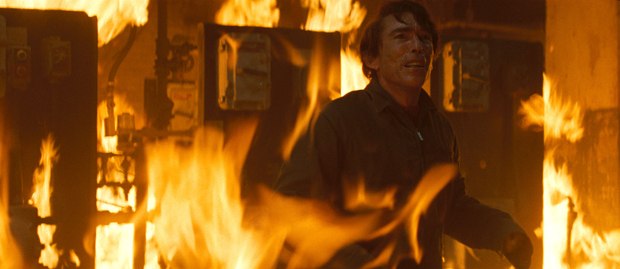Freddy's back so read how Method Studios helped remake his face in CG.
Check out the Nightmare on Elm Street trailer at AWNtv!
A Nightmare on Elm Street represents the first step in Method Studios' recent expansion into feature vfx, which has been bolstered by the appointments of Dan Glass, Drew Jones, Stephane Ceretti and Patrick Davenport.
Indeed, moving forward Method (part of London-based Ascent Media, which also owns Company 3, Beast and Rushes UK) has Matt Reeves' Let Me In, among other features.
Of course, in the case of Nightmare, it helped that Method's strong commercial and music video rep drew the attention of co-producer Michael Bay and Samuel Bayer, who hails from short form work and makes his directorial feature debut with the Nightmare remake.
"It's always kind of fun working with a first-time feature director," says Glass. "Obviously not first time directing, remotely, but he lends a new, fresh approach to things. There's not a tremendous amount of blood and guts, but [Freddy's] face is pretty full on, and the really fun thing about it was that Sam didn't want it to be anatomically correct. He wanted it to be scarier. There was this dark void of muscles and tendons and sinew that went in to the depth of the face that didn't have any reality you would expect.
"It's a good part of Method's expansion into features to take on that level of complexity. Eighty shots is not a tremendous shot count, but, nevertheless, it's an important achievement for the team here."
Sean Faden (Let Me In, Percy Jackson) served as visual effects supervisor for Method, and was onset during the 44-day Chicago shoot, which was nearly all nighttime. Not surprisingly, updating the face of the iconic '80s boogey man, Freddy Krueger (played by Jackie Earle Haley), was the biggest challenge and involved the most amount of vfx work (70+ shots).
"Definitely the advances in technology allowed us to do a lot more with Freddy's face," Faden suggests. "The prosthetics took his face pretty far and it looked great. Originally the damage was going to be to one side of the face to keep the budget down. But in the end, it was decided to go further, so we did damage to both sides of his face and added additional wounds to the cheeks and sides of the head and chin. We used the latest rendering technologies to get a nice wet, subsurface-y, flesh look."
Method scanned the face and sculpted it in ZBrush and then it was animated and matchmoved in PF Track in Maya and the lighting and rendering was all done with RenderMan through Houdini "It's pretty disturbing to see the inner face," Faden concedes.
The biggest difficulty was matching the performance so the CG would stick. "We created some custom Nuke tools to warp and lock things into place because his skin was not a rigid object, so we took advantage of Nuke's 3D capabilities to create 3D maps. We could create (and adjust) a roto shape or a matte or a blend mask that would blend from the wound into his actual face."
The other big effect that went through a few design phases was the stretchy wall, in homage to the original. "The challenge there was that the client really wanted to shrink-wrap the wall paper more around him than a normal elastic wall would allow, so it's a fine balance between pushing it further and breaking reality and also making it scary and cool," Faden says. "And in the end, I think it works when you accept it as a dream thing and suspend disbelief. We did a CG animation of Freddy trying to push his way through the wall and we did it in two shots.
First, there's a ripple in the wall to surprise the viewer and then Freddy pops through and starts working his way around the wall and eventually his claws pop through as well. "It was a pretty complex cloth simulation that all came together, which was done in nCloth in Maya," Faden explains. "Then we imported it into Houdini and that involved some post enhancements where we really tried to define Freddy's shapes better and added a lot of wrinkling and additional shaping that the nCloth wasn't giving us the control to do, so Houdini was really good for that."
Method also some fire shots during the origin of Freddy's backstory. He gets blasted in the face with an explosion, so they did a comp, where they shot Haley separately against a greenscreen with an interactive light and had a stuntman take a popper in the face. This was followed by 2D head replacement. After that, Freddy comes running out on fire, which Method shot as a motion control move, adding 2D fire for the head and 3D fire for the arms using Houdini. Practical fire didn't work for sweeping hand motion.
In terms of environments, Method did a tricky sequence where Nancy (Rooney Mara) fights Freddy in a pharmacy while experiencing micro-naps (when the brain involuntarily turns off due to lack of sleep). "The idea was that she'd be going down the aisles of this pharmacy and she'd be flipping in and out of the boiler room where Freddy is," Faden continues. "We had seven or eight motion control set ups where we carefully planned out the action and matched it to the boiler room. Freddy is not actually in the footage when she's fighting in the pharmacy. When we shot the boiler room we had to line up Nancy with herself and then put Freddy where he should be. It took a lot of choreographing with moving cameras and actors and it was pretty complicated."
Bill Desowitz is senior editor of AWN & VFXWorld.










